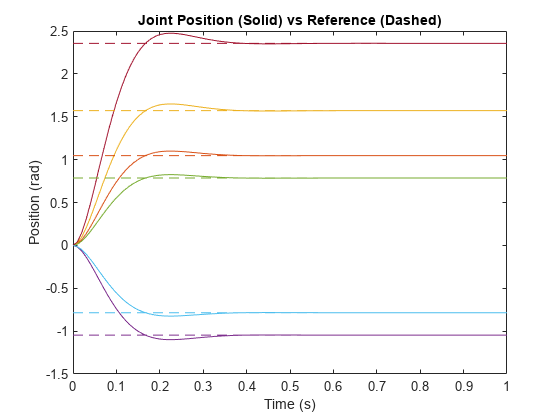updateErrorDynamicsFromStep
Update values ofNaturalFrequencyandDampingRatioproperties given desired step response
Syntax
Description
updateErrorDynamicsFromStep(updates the values of themotionModel,settlingTime,overshoot)NaturalFrequencyandDampingRatioproperties of the givenjointSpaceMotionModelobject given the desired step response.
updateErrorDynamicsFromStep(updates themotionModel,settlingTime,overshoot,jointIndex)NaturalFrequencyandDampingRatioproperties for a specific joint. In this case, the values ofSettlingTimeandOvershootmust be provided as scalars because they apply to a single joint.
Examples
Input Arguments
References
[1] Ogata, Katsuhiko.Modern Control Engineering4th ed. Englewood Cliffs, NJ: Prentice-Hall, 2002.

